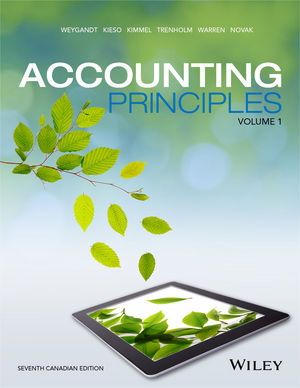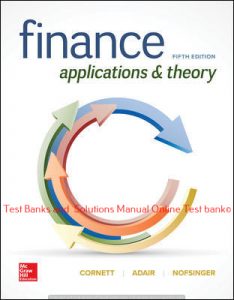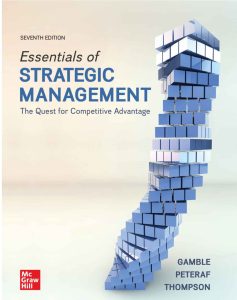Accounting Principles, Volume 1, 7th Canadian Edition Weygandt, Kieso, Kimmel, Trenholm, Warren, Novak Instructor Solution manual and Test bank
Product details:
- ISBN-978-1-119-04850-3
- Author: Weygandt, Kieso, Kimmel, Trenholm, Warren, Novak
- Publisher: Wiley
If you are interested in purchasing, please contact us via e-mail
[email protected]
Or you can order directly via Whatsapp
https://wa.me/12764472082
We will send the sample to you and purchase details
We will do our best to be happy and come back to us
TABLE OF CONTENTS
Chapter 1Accounting in Action 2
Accounting Keeps Corus on Air 2
Why Is Accounting Important? 4
Using Accounting Information 5
Objective of Financial Reporting 7
Forms of Business Organization 7
Proprietorship 8
Partnership 8
Corporation 8
Generally Accepted Accounting Principles 9
Ethics in Financial Reporting 9
Conceptual Framework 11
Accounting Standards 14
The Accounting Model 16
Financial Statements 16
The Expanded Accounting Equation 20
Transaction Analysis 21
Preparing Financial Statements 27
Income Statement 27
Statement of Owner’s Equity 27
Balance Sheet 29
Cash Flow Statement 29
Understanding the Information in the Financial Statements 29
Chapter 2
The Recording Process 58
Slaying the Dragons to Brew Up Sales 58
The Account 60
Debits and Credits 60
Double-Entry Accounting 63
Analyzing and Recording Transactions 64
The Accounting Cycle and Steps in the
Recording Process 64
The Journal 66
The Ledger 69
Posting 70
The Recording Process Illustrated 71
Summary Illustration of Journalizing and Posting 75
The Trial Balance 77
Limitations of a Trial Balance 79
Locating Errors 79
Some Process Explanations 80
Chapter 3
Adjusting the Accounts 114
Advance Sports Revenue Is Just the Ticket 114
Timing Issues 116
Accrual Versus Cash Basis Accounting 117
Revenue and Expense Recognition 118
The Basics of Adjusting Entries 119
Adjusting Entries for Prepayments 121
Adjusting Entries for Accruals 128
The Adjusted Trial Balance and
Financial Statements 135
Preparing the Adjusted Trial Balance 136
Preparing Financial Statements 136
Chapter 4
Completion of the Accounting Cycle 170
A “Cut Above” in Bookkeeping 170
Closing the Books 172
Preparing Closing Entries 172
Posting Closing Entries 177
Preparing a Post-Closing Trial Balance 178
Summary of the Accounting Cycle 180
Steps in the Accounting Cycle 180
Correcting Entries—An Avoidable Step 181
Classified Balance Sheet 184
Standard Balance Sheet Classifi cations 184
Alternative Balance Sheet Presentation 189
Using the Information in the Financial Statements 191
Working Capital 191
Current Ratio 191
Acid-Test Ratio 192
Appendix 4A: Work Sheets 193
Appendix 4B: Reversing Entries 197
Chapter 5
Accounting for Merchandising Operations 236
A “Frank” Look at Tracking Inventory 236
Merchandising Operations 238
Inventory Systems 239
Recording Purchases of Merchandise 241
Subsidiary Inventory Records 242
Freight Costs 243
Purchase Returns and Allowances 243
Discounts 244
Summary of Purchase Transactions 245
Recording Sales of Merchandise 246
Freight Costs 247
Sales Returns and Allowances 248
Discounts 249
Summary of Sales Transactions 249
Sales Taxes 250
Completing the Accounting Cycle 250
Adjusting Entries 251
Closing Entries 251
Post-Closing Trial Balance 253
Summary of Merchandising Entries in a Perpetual Inventory System 253
Merchandising Financial Statements 255
Single-Step Income Statement 255
Multiple-Step Income Statement 256
Classified Balance Sheet 258
Using the Information in the Financial Statements 259
Gross Profit Margin 259
Profit Margin 260
Appendix 5A: Periodic Inventory System 261
Chapter 6
Inventory Costing 300
A Fresh Approach to Costing Inventory 300
Determining Inventory Quantities 302
Taking a Physical Inventory 302
Determining Ownership of Goods 303
Inventory Cost Determination Methods 305
Specific Identifi cation 305
Cost Formulas: FIFO and Weighted Average 306
Financial Statement Effects 313
Choice of Cost Determination Method 314
Inventory Errors 316
Presentation and Analysis of Inventory 320
Valuing Inventory at the Lower of Cost and Net Realizable Value 320
Reporting and Analyzing Inventory 323
Presenting Inventory in the Financial Statements 323
Appendix 6A: Inventory Cost Formulas in Periodic Systems 326
Appendix 6B: Estimating Inventories 330
Gross Profit Method 330
Retail Inventory Method 331
Chapter 7
Internal Control and Cash 360
Keeping Track of the Cash 360
Cash and Internal Control 362
What Is Cash? 362
Internal Control 363
Control Activities 363
Limitations of Internal Control 367
Cash Controls 368
Internal Control Over Cash Receipts 368
Internal Control Over Cash Payments 371
Petty Cash Fund 373
Establishing the Fund 373
Making Payments from the Fund 373
Replenishing the Fund 374
Bank Accounts 375
Use of a Bank Account 375
Reconciling the Bank Account 379
Reporting Cash 385
Chapter 8
Accounting for Receivables 420
Last Call for Customer Payments 420
Accounts Receivable 422
Recognizing Accounts Receivable 422
Valuing Accounts Receivable 425
Notes Receivable 434
Recognizing Notes Receivable 435
Disposing of Notes Receivable 436
Statement Presentation and
Management of Receivables 438
Presentation 438
Analysis 439
Accelerating Cash Receipts from Receivables 440
Chapter 9
Long-Lived Assets 468
Capitalizing on Education 468
Property, Plant, and Equipment 470
Determining the Cost of Property, Plant, and Equipment 470
Depreciation 474
Revising Periodic Depreciation 482
Disposal of Property, Plant, and Equipment 486
Natural Resources 493
Cost 494
Depletion 494
Disposal 495
Intangible Assets and Goodwill 496
Accounting for Intangible Assets 496
Intangible Assets with Finite Lives 497
Intangible Assets with Indefi nite Lives 498
Goodwill 499
Statement Presentation and Analysis 500
Presentation 500
Analysis 501
Chapter 10
Current Liabilities and Payroll 528
Butterflies Bring About Better Banknotes 528
Determinable (Certain) Current Liabilities 530
Accounts Payable 530
Unearned Revenues 530
Operating Line of Credit and Bank Overdraft 531
Short-Term Notes Payable 532
Sales Taxes 533
Property Taxes 534
Current Maturities of Long-Term Debt 535
Uncertain Liabilities 536
Provisions 536
Contingencies 540
Payroll 541
Employee Payroll Costs 542
Employer Payroll Costs 544
Recording the Payroll 545
Financial Statement Presentation 550
Appendix 10A: Payroll Deductions 551
Appendix A: Specimen Financial Statements; Corus Entertainment Inc. A1
Appendix B: Sales Taxes B1
Appendix C: Subsidiary Ledgers and Special Journals C1
Company Index CI-1
Subject Index I-1
In addition, you can see the Lists
https://onlinetestbanks.net/new-test-banks-and-solutions-manual-2019-2020/
https://onlinetestbanks.net/list-of-solution-manual-and-test-bank-2020-2021/
Accounting Principles Volume 7th
and Similarly our Facebook page
Best wishes,
A plus Team ,
================
#Test_bank
#Solutions_manual
#Instructor_Manual
#Solve_exercises
#Study_Guide
#Problems
#exercises
#Homework
#appendix
#exams
#2021_Edition
#2020_Edition
Accounting Principles Volume 7th



